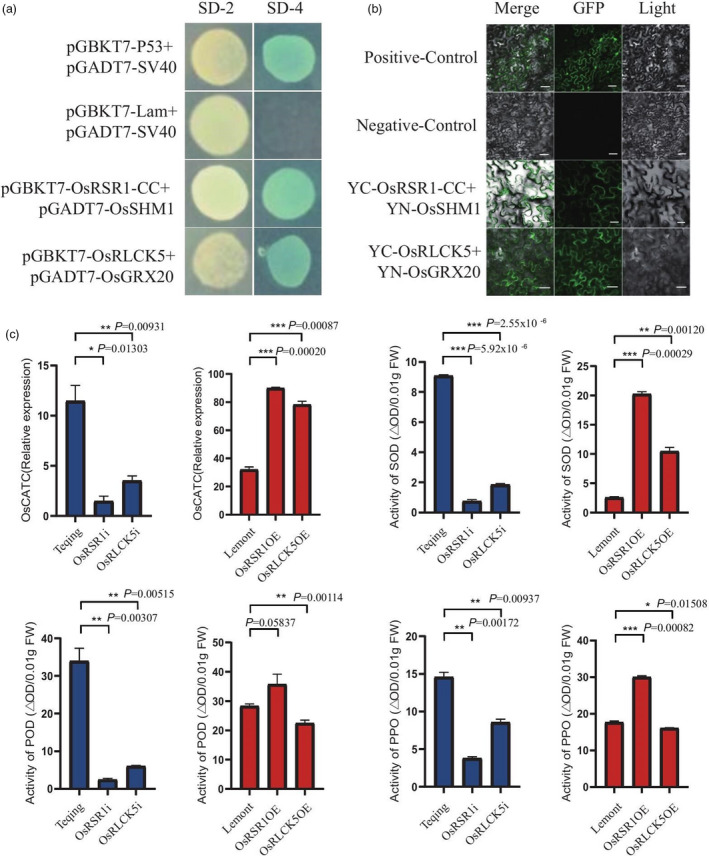Figure 5.

OsRSR1 and OsRLCK5 regulate reactive oxygen species (ROS) burst. (a) Detection of interaction between OsRLCK5 and OsGRX20, and OsRSR1‐CC and OsSHM1 in a yeast two‐hybrid (Y2H) assay, respectively. Photograph shows the growth behaviour of transformants on SD/Leu‐Trp media (SD‐2) and SD/Ade‐Leu‐Trp‐His (SD‐4) plus AbA and X‐α‐gal media. pGBKT7‐p53 and pGADT7‐SV40 large T‐antigen were set as the positive control pair. pGBKT7‐Lam and pGADT7‐SV40 large T‐antigen were set as the negative control pair. (b) Bimolecular fluorescence complementation (BiFC) assay verified the interaction between OsRLCK5 and OsGRX20, and OsRSR1‐CC and OsSHM1 in tobacco leaf epidermis cells, respectively. Scale bars: 50 mm. 35S‐YFP was employed as positive control, and negative control means the pXY104 (nYFP; contains OsRLCK5 or OsRSR1‐CC) were co‐expressed in tobacco leaf epidermis cells with empty pXY106 (nYFP) vector. (c) Changes in ROS levels, activities of POD, SOD and PPO, and OsCATC expression in transgenic and wild type (WT; Teqing and Lemont) leaves at 72 hpi. Values of POD, SOD and PPO activities represent the average of four lines. Data indicate mean ± standard error of mean (SEM) of four technical replicates. Statistically significant differences were analysed by one‐way ANOVA (*P < 0.05; **P < 0.01; ***P < 0.001).
